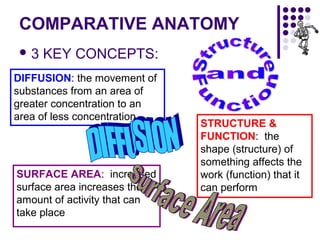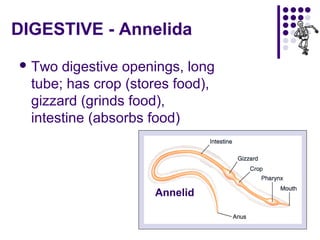The document discusses comparative anatomy and how body systems have evolved across different animal phyla. It provides examples of the digestive, respiratory, circulatory, excretory, nervous, and skeletal systems in cnidarians, annelids, arthropods, and mammals. Key evolutionary adaptations include the development of internal organs, closed circulatory systems, and increasingly complex nervous systems including the brain.






























